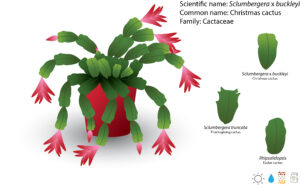
Christmas of a desert – Christmas cactus
Christmas cacti are familiar flower shop pot plants. Cacti of this genus, Schlumbergera, are some of the most widely cultivated and enjoyed cacti. It is named to honor Fréderic Schlumberger, an avid French cultivator of cacti and other succulents. It is a tough plant that can grow over a year and it is suitable for Thanksgiving and Easter. This genus consists of six species of bushy cacti that are originated from southeastern Brazil. They gave […]
Read More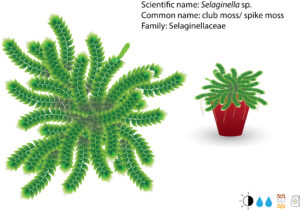
Selaginella – False roses of Jericho
Selaginella is an evergreen, rhizomatous perennial in the genus of Selaginella from the family of Selaginellaceae. Generally known as spike moss or arborvitae ferns, mainly found in tropical and warm-temperate zones, Selaginella is highly valued as small ornamental plants that provide a very satisfactory blossom miracle. Although share resemblance with the true rose of Jericho (Anastatica hierochuntica), which is a flowing plant in the family Brassicaceae. They are absolutely botanically unrelated because Selaginella is one […]
Read More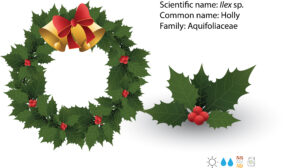
Holly: Frau Holle’s holy tree
Of all the trees that are in the wood, the holly wears the crown! There are four hundred or so evergreen and deciduous trees and shrubs that make up this large genus, which is Aquifoliaceae. Generally, species under this genus are known as holly. They come predominantly from the temperate regions of the northern hemisphere. They are grown for their foliage and produce clusters of small glossy berries. With its shiny green and spiky foliage […]
Read More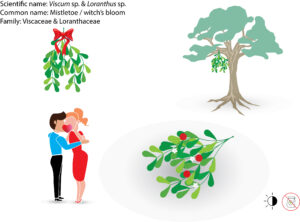
Mistletoe – a parasitic plant is the symbol of Christmas
Mistletoes are a diverse group of aerial parasitic plants, particularly obligate hemiparasitic with a worldwide distribution. It is usually found in the temperature forest along the Pacific rim of southern South America. It is a successful and interesting plant that parasitize trees and shrubs, establishing xylem connections with their hosts to obtain water and other xylem-borne nutrients. Mistletoe grows on a range of trees including willow, apple, and oak trees. It is also found on […]
Read More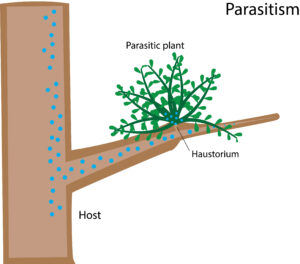
They are expert in stealing – parasitic plants
It doesn’t sound rationale that there are plants that do not make their own foods and living as parasites on other plants. As autotrophs, plants are supposed to live on their own because plants, as most people would assume, are entitled to their abilities to photosynthesis, which is the process of making foods with light and air. However, nature never fails to challenge people’s perceptions with exceptions. In fact, there are about 4500 species of […]
Read More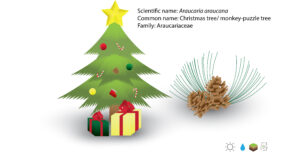
The tree that bears presents – Christmas tree
The Christmas present is underneath the Christmas tree. Weeks before, the children had written letters to the baby Jesus and slipped them in between the winter windows. Then, the children go to bed while waiting for the surprises from Santa Claus. The tradition of giving presents is not so very old. There was a time when the Christmas tree was unknown in the mountainside. Nowadays, the market offers a Christmas tree suitable for every taste […]
Read More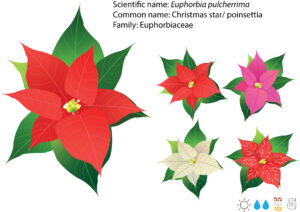
The Christmas star– Poinsettia
Many flower blossoms remind us of radiant stars in appearance and color. The flowers and other plant parts with stars ultimately lead to the Christmas star or star of Bethlehem, which is a natural conclusion from the Christian point of view that dominated even science until at least the end of the nineteenth century. Potted poinsettias are a familiar Christmas decoration all over the northern hemisphere, but this native of Mexico is only a garden […]
Read More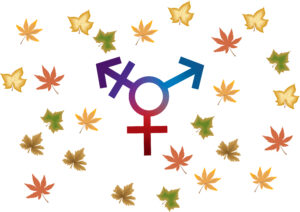
Sexuality in plants – he or she? or both?
Most people would refer plants to female or she and mostly describe them as a symbol of femininity, resilience, and fertility in literacy because regardless of their sex, they are capable of producing seedlings or baby plants either through sexual or asexual reproduction. Similar to animals, plants have genders. However, it is not as clear and straightforward as compared to animals and humans. The variations of sex in plants are extensive which are reflected as […]
Read More